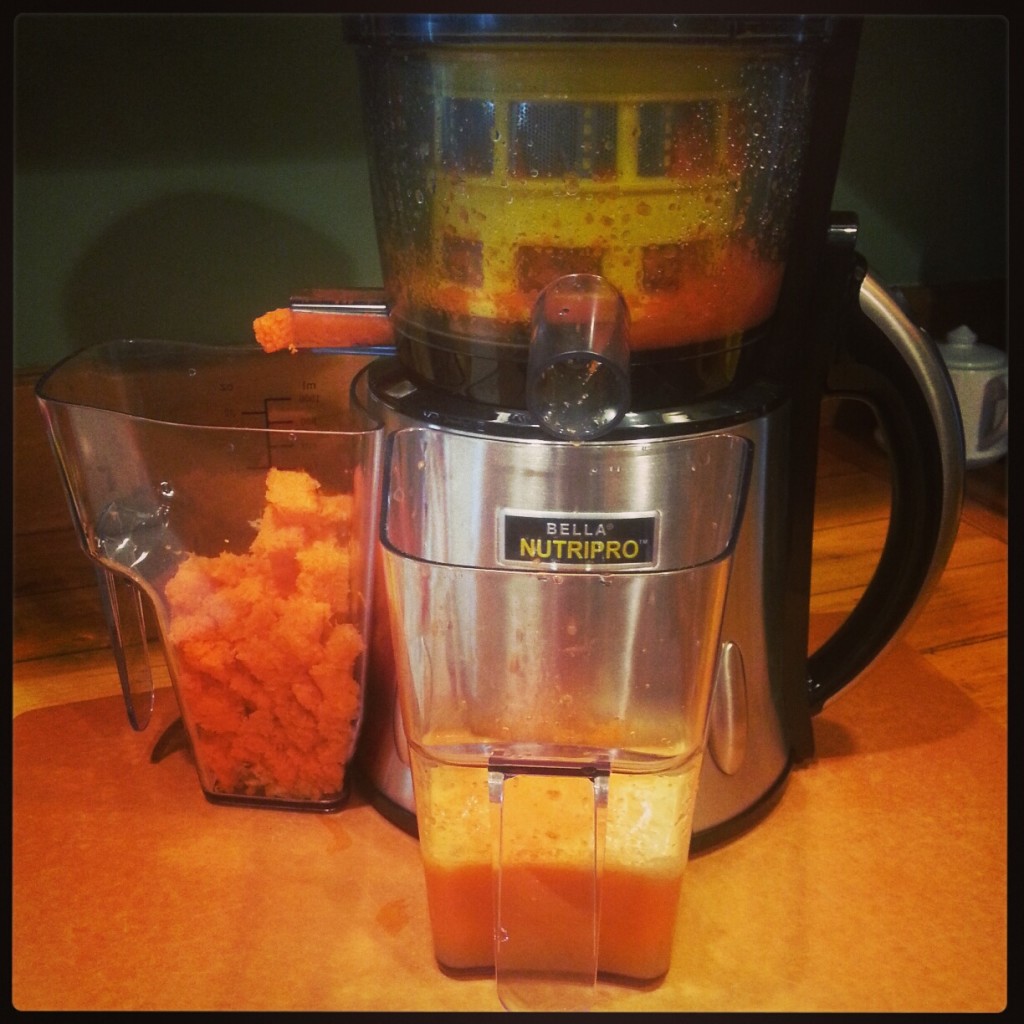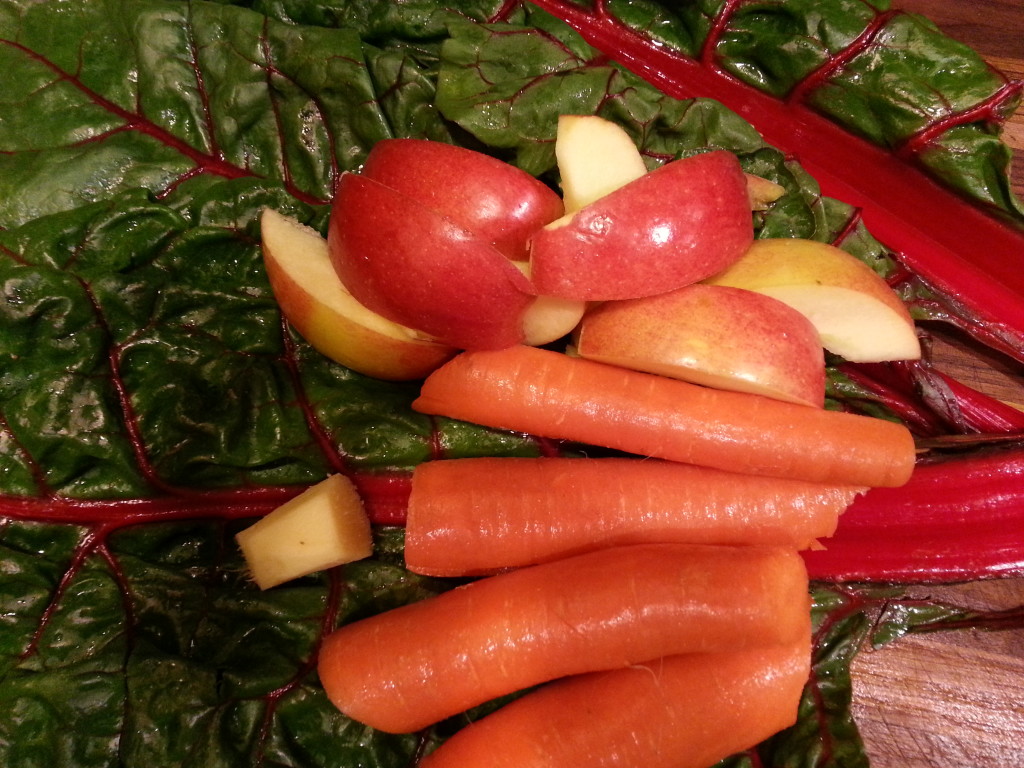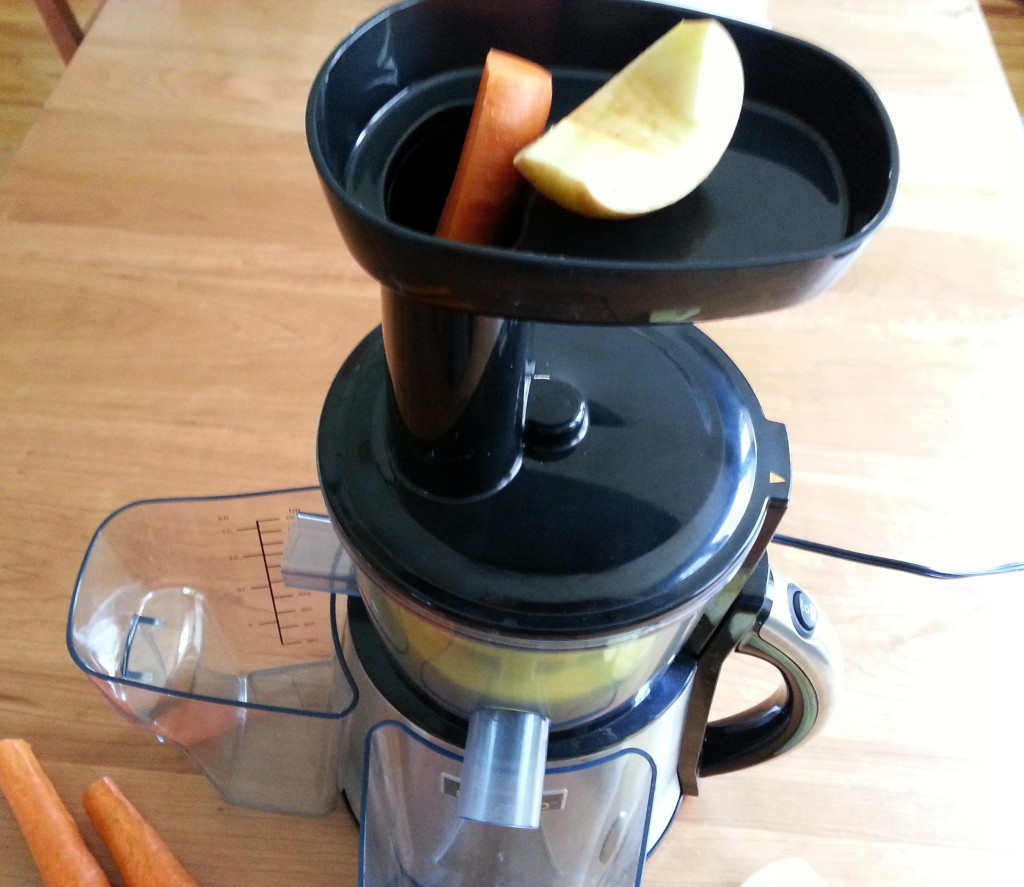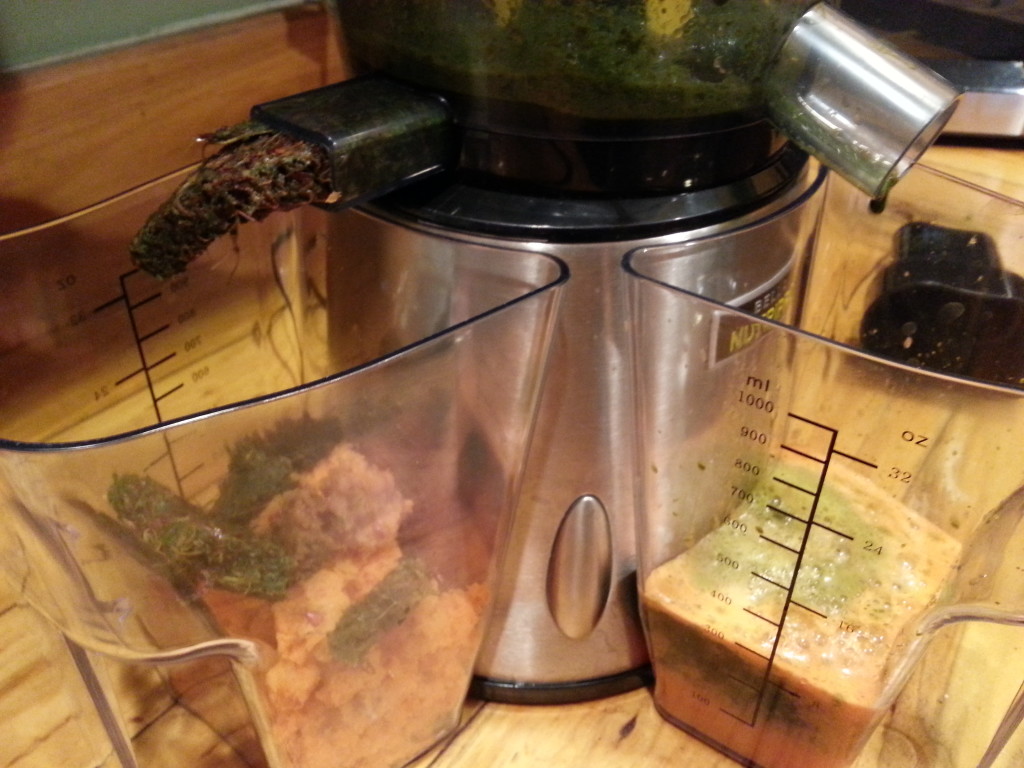Juicer Education: Centrifugal vs. Cold Press
 On days when I’m feeling less than healthy or having a hard time getting motivated, a glass of crisp, freshly squeezed juice can really give me a boost. The bright, fresh flavors and shot of vitamins seems to go straight to my brain, telling me to wake up and enjoy the day!
Are you in the market for a juicer? Maybe you are already addicted to fresh juice but have been contemplating buying a juicer so you can make juice at home. Maybe you have a goal of cleaning up your diet and think juicing might be a way to help. Whatever the reason, before you head to the store to buy a juicer, there are a few things you should know.
On days when I’m feeling less than healthy or having a hard time getting motivated, a glass of crisp, freshly squeezed juice can really give me a boost. The bright, fresh flavors and shot of vitamins seems to go straight to my brain, telling me to wake up and enjoy the day!
Are you in the market for a juicer? Maybe you are already addicted to fresh juice but have been contemplating buying a juicer so you can make juice at home. Maybe you have a goal of cleaning up your diet and think juicing might be a way to help. Whatever the reason, before you head to the store to buy a juicer, there are a few things you should know.
I may receive commissions from purchases made through links in this article including Amazon Affiliates. Full Disclosure
Different types of juicers
Ready for a little juicer education? Before I got my Bella NutriPro Juicer (top photo), I thought that a juicer was a juicer was a juicer. I had no idea there were different types. Turns out there are two main types of juicers – centrifugal and cold press.Centrifugal juicers
For years, I’ve had an electric Krups juicer. I dust it off every once in awhile to make a batch of carrot apple juice. It’s a pretty straightforward model where the fruits and veggies are forced through a grater-like blade and then spun around really fast until the juice comes pouring out of the spout at the bottom. Now that I am somewhat of a juicing expert (LOL!), I know that this type is called a centrifugal juicer. Centrifugal juicers are the most common type of juicers, and you can buy one for as little as $50 or spend up to $300, depending on the bells and whistles. The downside of centrifugal juicers is that the spinning motion generates heat, which destroys and oxidizes some of the enzymes in the juice, making it less nutritious.Cold press juicers
I’m not sure how long cold press juicers have been around but they seem to be coming into vogue as of late. Cold press juicers, like the NutriPro, use an auger to crush or masticate the produce and then compress it through a sieve to extract the juice. It’s a much slower process, although plenty fast to get you that glass of juice you want quickly.Benefits of a cold press juicer
So yes, cold press juicers tend to cost more than traditional, centrifugal juicers, but the cold press method has some benefits that may be worth paying a premium for:- Juice is extracted from produce through slow compression (as opposed to a fast spinning motion), so the juice never heats up.
- Because it isn’t heated, juice from cold press juicers is a more natural, “living juice” with more of the nutrients and enzymes found in raw produce.
- Cold press juicing allows more liquid to be extracted from each fruit and vegetable, s0 you get more juice from the same amount of produce.
How it works
For a cup of my Sweet Green juice (recipe below), I started with some swiss chard, a couple of carrots, an apple and a chunk of ginger. Drop the produce into the feeding tube at the top of the machine. I found that the machine will jam up if the carrot chunks are too large but you can easily un-jam it by pressing the reverse button.
Drop the produce into the feeding tube at the top of the machine. I found that the machine will jam up if the carrot chunks are too large but you can easily un-jam it by pressing the reverse button.
 What’s cool about this model is that the pulp comes out of one tube and the juice comes out another! The two containers come with the juicer, which is great.
What’s cool about this model is that the pulp comes out of one tube and the juice comes out another! The two containers come with the juicer, which is great.
 All those ingredients create about 8 to 10-oz of juice and 1 1/2 cups of pulp. Don’t throw away the pulp – I’ve created a recipe for Minestrone soup that uses the pulp!
The NutriPro juicer cleans up easily. My only complaint is that there are quite a few pieces to wash. I recommend rinsing them immediately, before anything has a chance to stick.
All those ingredients create about 8 to 10-oz of juice and 1 1/2 cups of pulp. Don’t throw away the pulp – I’ve created a recipe for Minestrone soup that uses the pulp!
The NutriPro juicer cleans up easily. My only complaint is that there are quite a few pieces to wash. I recommend rinsing them immediately, before anything has a chance to stick.
Green juice recipe
Sweet Greens Juice
Author:
Ingredients
- 3 big leaves swiss chard
- 2 large juicing carrots (or 3 regular carrots)
- 1 medium to large apple
- 1 1″ chunk ginger
- (I recommend organic produce whenever possible.)
Instructions
- Wash all produce.
- Rip swiss chard into manageable pieces
- Cut carrots into chunks (peel only if necessary)
- Core and cut apple (leave skin on)
- Peel ginger
- Place ingredients into the feed tube one at a time
- If anything gets stuck, use the reverse button to fix
- Voila – your healthy juice is ready!
- P.S. Be sure to save the pulp to use for other recipes. (Recipe for Juice Pulp Minnestrone coming soon!)

Do you own a juicer? What do you like about and what do you wish were different?
 (Disclosure: I was given a free NutriPro juicer in exchange for my honest opinion. There are affiliate links in this post. If you make a purchase I may receive a small commission at no extra cost to you. Thank you for supporting Mindful Momma if you do!)
(Disclosure: I was given a free NutriPro juicer in exchange for my honest opinion. There are affiliate links in this post. If you make a purchase I may receive a small commission at no extra cost to you. Thank you for supporting Mindful Momma if you do!)



You do take the saving and using of left over stuff to limits even beyond the beyond. Well good for you. You are an inspiration! I’ll try the Easy Juicer Pulp Minestrone one of these days. It looks so good and so healthy.
What else can you do with that pulp? Could it go into cookie dough or bread. Would it be healthy in homemade doggie food. Could you dry it and stuff pillows?
Thank you for your careful research.
Robbie
Using juice pulp in doggie food might be a great idea Mom! We should try it out on Scamper and see what he thinks!
I’ve had my Champion juicer since 97′. I’ve used it for juicing and nut butters. It’s an amazing machine! I have no requests but would love for it to clean itself!
LOL – I’d like my juicer to clean itself too! 🙂